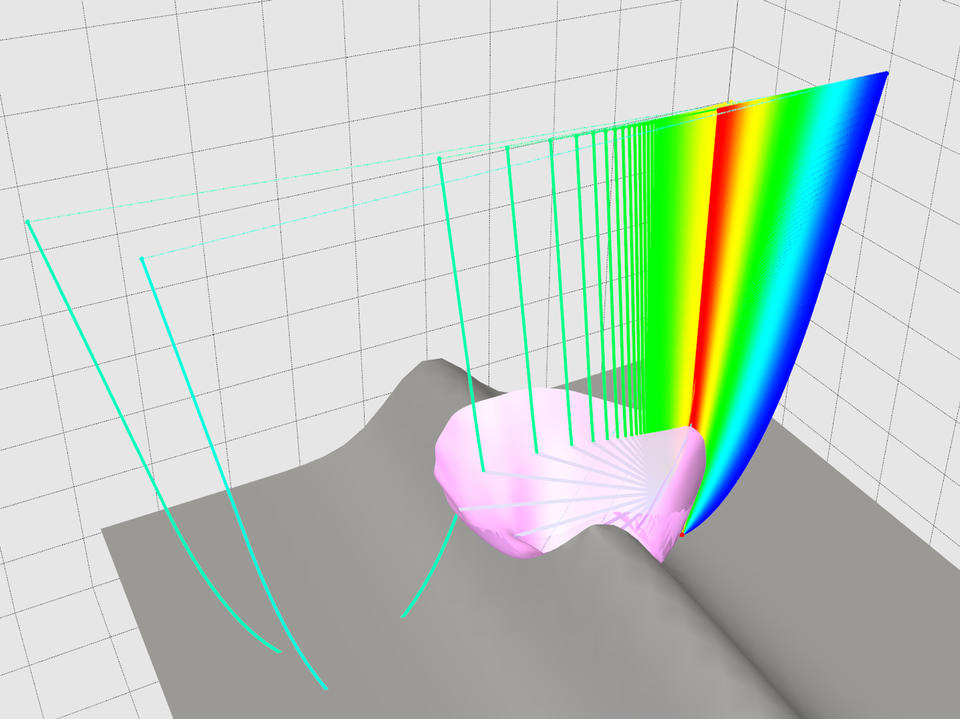Illumination Rays
Which survey azimuths and offsets are required to illuminate a point on the target? Does it change along the target? Which reflection angles and azimuths does a survey cover in a target point? How does the angular coverage change along the target? Where do rays propagate down to the target?
To investigate how rays propagate down to a target, use the interactive point-and-click ray-tracing function. All rays down to a selected point on a reflector are shown, for one reflection angle or azimuth at a time.
For a more systematic and comprehensive analysis, use the illumination rays workflows. In the work-flows, many target points can be analysed, and all reflection angles and azimuths are taken into account.
The results for each target point are shown in a survey- and a target-domain rose diagram. The survey-domain roses show which shot-receiver offsets and azimuths illuminate the target points, while the target-domain roses show which reflection angles and azimuths are covered. The roses are displayed down in the target points to make it easy to see how the illumination varies across the target.
The roses are interactive: Click inside a rose to see the corresponding rays.
The analysis can be restricted to show the illumination for a particular survey. Alternatively, all rays to the target points can be used, disregarding surveys. This is very useful early in the survey planning, to get an overview of which azimuths and offsets must be involved to illuminate the different parts of the target.

Interactive point-and-click ray-tracing for one reflection angle.

Interactive point-and-click ray-tracing for one reflection azimuth.

The rays to a target point for a marine survey.
See this Illumination Ray Concept presentation for more information.